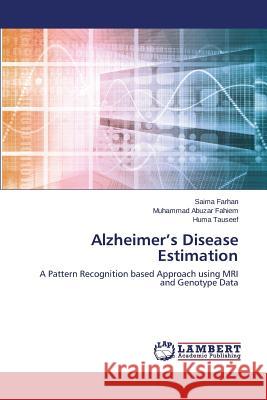Alzheimer's Disease Estimation » książka
Alzheimer's Disease Estimation
ISBN-13: 9783659772177 / Angielski / Miękka / 2015 / 164 str.
Alzheimer's disease, a progressive neurodegenerative disorder of the brain, is a major cause of death around the globe. Clinical symptoms of the disease appear at later stages, however, modern brain imaging techniques have enabled us to non-invasively visualize the internal structures of the brain and identify structural and functional changes well before time. Early detection of the disease is crucial for the patient, care givers and relatives to cope with the situation as well as for medical practitioners to discover new drugs. A novel image processing based approach is proposed for early identification of Alzheimer's disease from MRI of the brain. Features used are different tissue densities and size of hippocampus. Seven classification models are used for identification of patients and controls. Results are obtained using image features, genetic features and combination of the both. Image features produced best classification of cases and controls. On the other hand, genetic data can be very useful in predicting the risk of disease. The proposed approach has achieved higher accuracy/specificity/sensitivity values even using smaller feature set.
Alzheimers disease, a progressive neurodegenerative disorder of the brain, is a major cause of death around the globe. Clinical symptoms of the disease appear at later stages, however, modern brain imaging techniques have enabled us to non-invasively visualize the internal structures of the brain and identify structural and functional changes well before time. Early detection of the disease is crucial for the patient, care givers and relatives to cope with the situation as well as for medical practitioners to discover new drugs. A novel image processing based approach is proposed for early identification of Alzheimers disease from MRI of the brain. Features used are different tissue densities and size of hippocampus. Seven classification models are used for identification of patients and controls. Results are obtained using image features, genetic features and combination of the both. Image features produced best classification of cases and controls. On the other hand, genetic data can be very useful in predicting the risk of disease. The proposed approach has achieved higher accuracy/specificity/sensitivity values even using smaller feature set.











